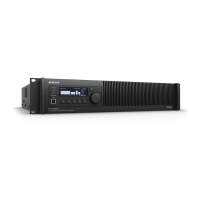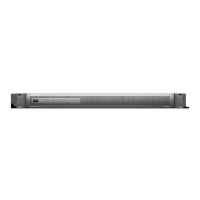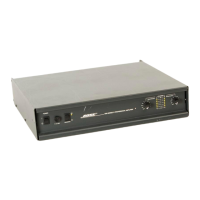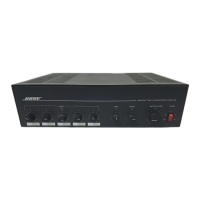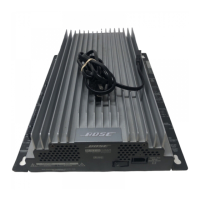39
TEST PROCEDURES
CAUTION: If you are using Bose
®
doubleshot speaker arrays as test loudspeakers, be sure to
not exceed 50W input to each speaker or you will damage them.
3.16 Mute channel one. Un-mute the rest of the channels one by one. Re-mute each channel
before moving to the next one.
3.17 In CSD, Close the control window. Stop or pause the audio source.
3.18 Using the power switch on the back of unit turn it off and listen for any off pops or unwanted
noise. Fail the unit if an off-pop can be heard.
4. Hi-Pot Test
THIS IS A MANDATORY TEST
Note: If an amplifier requires removal of the top cover or the AC inlet PCB for repair, it
MUST be Hi-Pot tested before being returned to the customer to ensure that there is no potential
shock hazard.
This test requires a Hi-Pot tester with a ground bond attachment to perform this test. Amplifier
Connections:
The Hi-Pot tester connects to the amplifier by means of a wiring harness. The AC cord of the
amplifier plugs into the Hi-Pot tester AC adapter box and another lead connects by means of an
alligator clip to the rear of the chassis at the unpainted corner of the rear rack ear.
Hi-Pot Tester Settings:
HiPot: 2120VDC, rise time = 1 sec., dwell = 1 to 4 seconds, current limit = 500 uA
4.1 Connect the AC mains cord to the back of the amplifier under test. Plug the other end of the
AC cord into the Hi-Pot tester.
4.2 With the tester set to the above parameters, perform the test. If the unit fails, remove the top
cover and repair the problem. Once the unit is repaired, repeat the Hi-Pot and the ground bond
test to ensure the unit is safe to return to the customer.
5. Ground Bond Test
Note: This test only needs to be performed if the chassis ground wire from the AC IEC
connector or AC inlet PCB to the inside of the chassis of the amplifier has been removed or
disturbed as part of a repair. If it has not, this test does not need to be performed.
This test measures current handling capability between the ground blade on the AC inlet or
mains plug and the earth bond point on the rear of the chassis.

